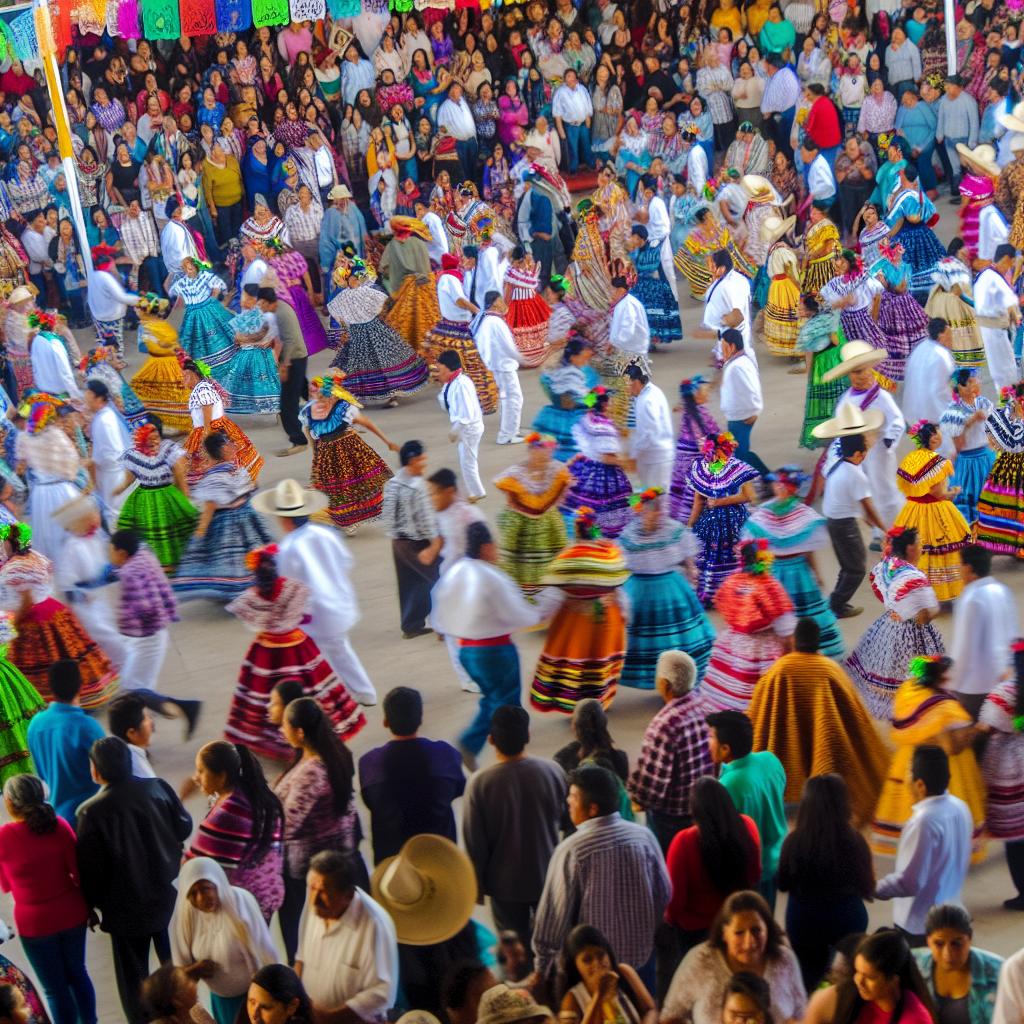Introduction to Cultural Festivals
Cultural festivals offer a vibrant showcase of local customs, traditions, and arts, bringing people together to celebrate their heritage and community spirit. Festivals serve as a medium to preserve cultural identity and strengthen community bonds, emphasizing the diversity and richness of the cultural tapestry found within a region. Two notable examples of such festivals are the Guelaguetza in Oaxaca, Mexico, and the Feria Nacional de San Marcos in Aguascalientes, Mexico. These festivals provide a platform for preserving cultural history while fostering communal ties.
The Guelaguetza Festival
Location: The Guelaguetza takes place in Oaxaca, Mexico, typically in July.
Significance: This festival is a profound expression of Oaxacan culture and generosity. The name “Guelaguetza” is derived from the Zapotec word meaning “offering” or “mutual help.” It embodies the spirit of giving and cooperation integral to the cultural ethos of Oaxaca.
Events and Activities: The Guelaguetza features traditional dances, music, and food, showcasing the cultural diversity of Oaxaca’s eight regions. Each of the regions presents unique performances, clad in vibrant costumes, filling the atmosphere with an air of festivity and cultural pride. Dances such as La Danza de la Pluma, La Danza de los Diablitos, and many others highlight the ethnic diversity of Oaxaca. The soundscape is enriched by traditional music played with indigenous instruments, resonating across the city and beyond.
Historical Background
The origins of the Guelaguetza date back to pre-Hispanic times, initially celebrated as a tribute to the goddess of corn, Centeotl. The goddess was central to agricultural cycles, and her worship was crucial for the community’s sustenance and prosperity. Over the years, the celebration was integrated with Christian traditions introduced by the Spanish colonizers, forming a syncretic tradition that melds indigenous and European influences, creating the festival known today. This fusion of cultures is evident in the mix of pagan and Catholic elements throughout the festival.
Cultural Impact
The Guelaguetza serves as a significant tourist attraction, drawing both domestic and international visitors. Beyond its economic impact on the local community, the festival is crucial for sustaining indigenous customs and strengthening cultural identity. Gathering thousands of attendees, the festival fosters cultural exchange and promotes understanding among different communities. It serves as a vibrant platform for the younger generations to connect with their heritage and learn the ancient traditions of their forebears. By presenting indigenous customs to a wider audience, it plays a critical role in preserving these traditions for posterity.
Feria Nacional de San Marcos
Location: The Feria Nacional de San Marcos is held annually in Aguascalientes, Mexico, usually from mid-April to the beginning of May.
Significance: Known as one of Mexico’s largest and oldest fairs, it offers a mix of cultural, commercial, and entertainment activities. Often referred to as “la feria de ferias”, it is a major event in the Mexican cultural calendar, signaling the vibrant cultural and economic life of Aguascalientes.
Events and Activities: The fair is famous for its concerts, bullfights, art exhibitions, and parades. Renowned musicians and performers entertain crowds, covering a broad spectrum of musical genres from traditional mariachi to modern pop. Art exhibitions present works from both established and upcoming artists, bridging the gap between tradition and contemporary art. Additionally, the fair is a significant venue for agricultural and livestock exhibitions, reflecting the region’s economic activities and rural traditions, promoting local produce, and innovations in agriculture.
Historical Background
The Feria Nacional de San Marcos began in the early 19th century as a commercial fair. It was originally intended to promote local products and boost the regional economy. Over the years, it evolved to include cultural events, entertainment, and a variety of leisure activities, becoming a multifaceted celebration. The fair’s transformation from a simple commercial gathering to a cultural extravaganza highlights the dynamic interplay between economics and culture, underscoring how cultural events can act as catalysts for economic growth and community development.
Cultural Impact
The fair significantly boosts the local economy, attracting millions of visitors each year. It acts as a vibrant stage for emerging artists and performers, contributing to the spread and appreciation of Mexican arts and culture. The visibility it offers to local craftsmen and businesses further stimulates the cultural sector and provides opportunities for cross-cultural interactions. Additionally, the fair fosters a sense of pride and community among the residents of Aguascalientes, reinforcing local identity and cultural values.
Conclusion
Festivals like Guelaguetza and Feria Nacional de San Marcos play a vital role in preserving cultural heritage and stimulating local economies. They offer a venue for cultural exchange and community interaction, reinforcing the social fabric and cultural identity of their respective regions. Hosting such events helps deepen the awareness of cultural diversity and mutual understanding among participants. To learn more about these vibrant events, visit the official Guelaguetza Festival website or the Feria Nacional de San Marcos website.







